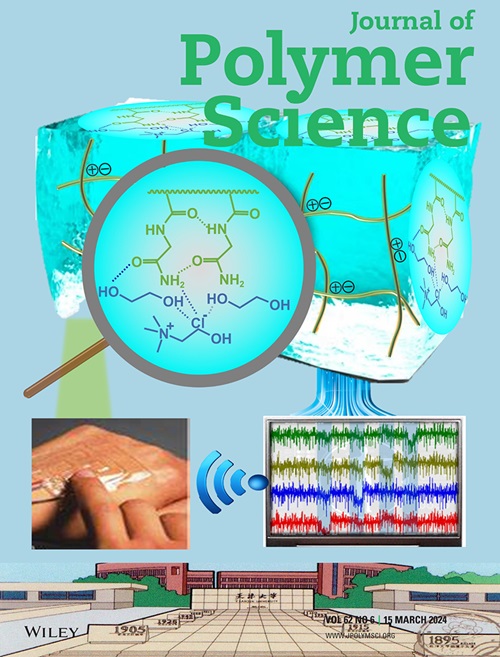Hexafluoroisopropanol-LiI Initiated Cationic Polymerization of Alkyl Vinyl Ethers
Abstract
First thought, we tried hexafluoroisopropanol (HFIP) as the hydrogen bonding donor and LiI as a mediator to promote the radical homopolymerization of vinyl ethers. Unexpectedly, an exothermic reaction and significant viscosity increase were observed as the monomer conversion of isobutyl vinyl ether (IBVE) up to 90% at 0°C in the absence of a radical initiator. Therefore, we speculated that it was a cationic rather than a radical polymerization and confirmed with the proton trapping agent 2,6-di-tert-butylpyridine. With anhydrous CH2Cl2 as a solvent, the molecular weights of the PIBVE are in the range of 5900–8900. With a decrease in the reaction temperature to −20°C, the molecular weight distribution is in the range of 1.74–1.19. Moreover, 2-ethylhexyl vinyl ether (EHVE) and cyclohexyl vinyl ether (CHVE) could also undergo a similar polymerization. A plausible cationic polymerization mechanism is proposed that vinyl ethers are initiated by H+ which is generated by the reaction of HFIP and LiI. The end groups of PIBVE are composed of -H at the α-end and an aldehyde group -CH2CHO (I) or an acetal group -CH2CH(OCH2CH(CH3)2)2 (II) at the ω-end. In addition, the end groups for PEHVE and PCHVE are consistent with the above mechanism.


 求助内容:
求助内容: 应助结果提醒方式:
应助结果提醒方式:


